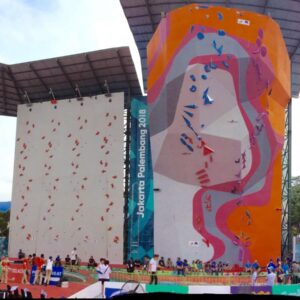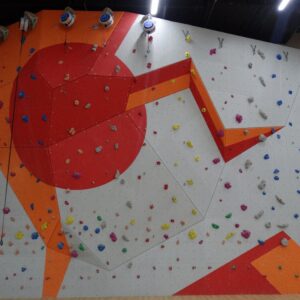Climbing Walls
Climbing Walls
The sport will make its Olympic debut at Tokyo 2020 and will feature three disciplines: speed climbing, bouldering and lead climbing.
A climbing wall is an artificially constructed wall with grips for hands and feet, usually used for indoor climbing, but sometimes located outdoors. The material used is a thick multiply board with holes drilled into it. The wall has places to attach belay ropes.
Each hole contains a specially formed t-nut to allow modular climbing holds to be screwed onto the wall and route setting. Engineered industrial fasteners are used to secure climbing holds.
Textured products including concrete, paint and polyurethane mixed with sand cover the face of the surface. The wall may contain surface structures such as indentions (in cuts) and protrusions (bulges), or take the form of an overhang, under hang or crack.
Climbing walls can be categorized as per the 3 Olympic disciplines:
Lead: Designed for lead climbing or top roping and can rise to any height. They require the use of ropes and personal protective equipment (PPE) to ensure climber’s safety at any moment of the ascent and descent.
Boulder: Designed for unroped climbing and can rise to a maximum height of 4.5m. They do not require the use of ropes or PPE. Safety mats attached below the wall to ensure climber’s safety.
Speed: Most common use is during competitions, with an height of 15.5m. Climbers must reach the top at the fastest pace, to win this vertical race. Agility and speed are the key must-have.
Showing all 4 results




